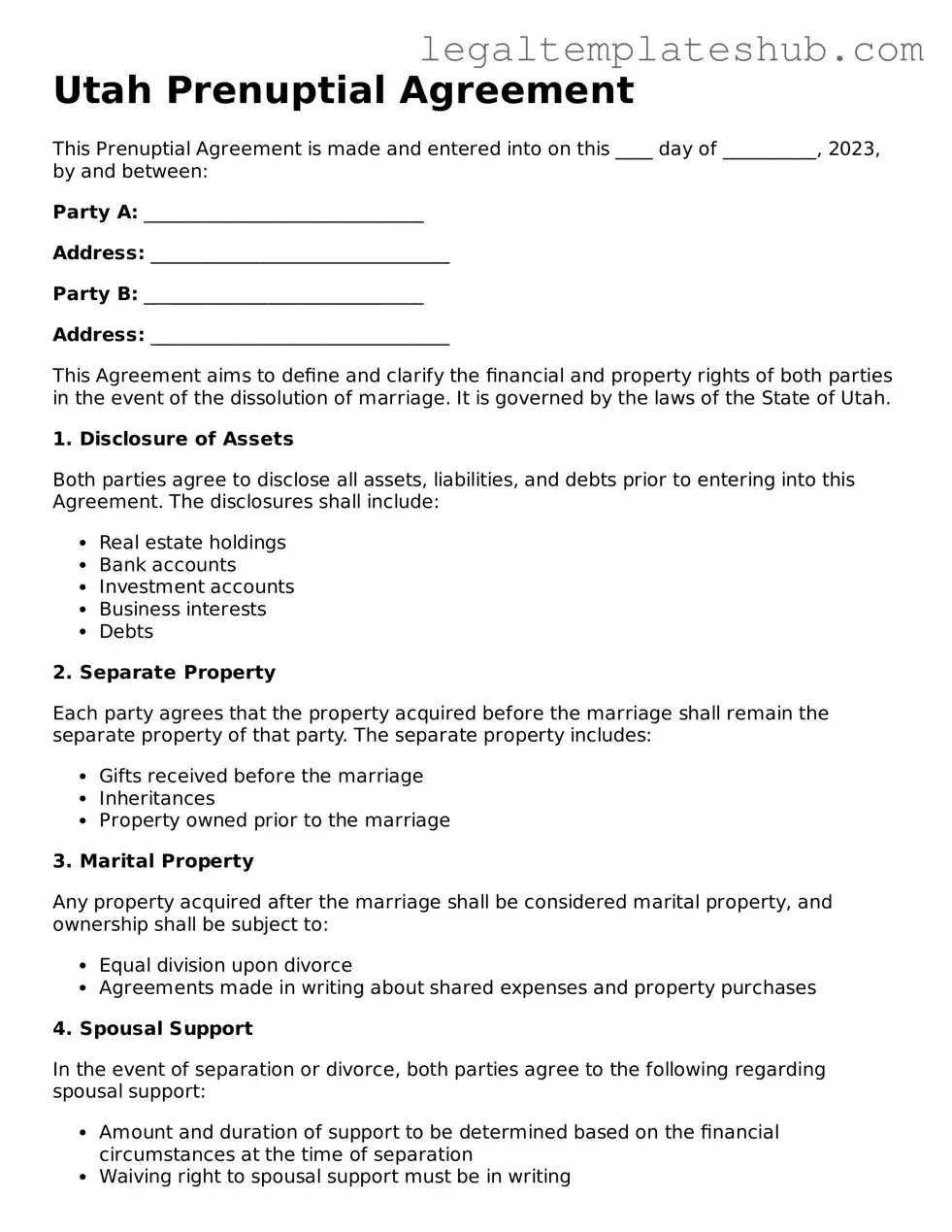Printable Prenuptial Agreement Document for Utah
A Prenuptial Agreement in Utah is a legal document that outlines how assets and debts will be handled in the event of a divorce or separation. This agreement helps couples clarify their financial rights and responsibilities before tying the knot. To start your journey toward financial clarity, fill out the form by clicking the button below.
Access Editor
